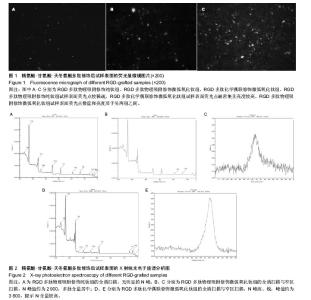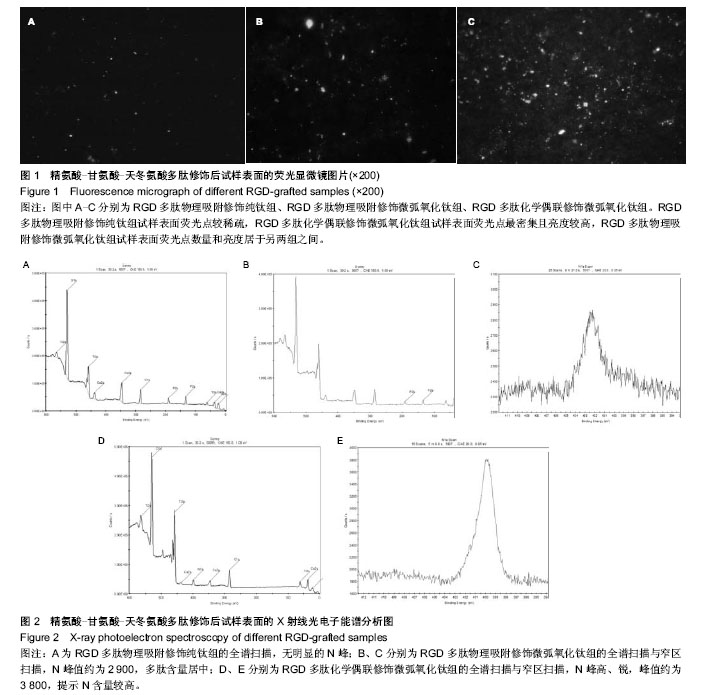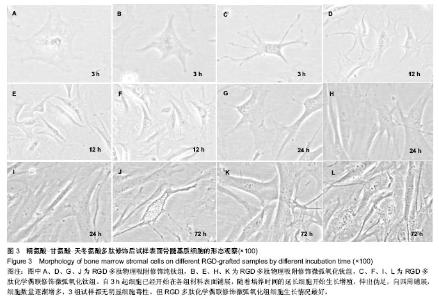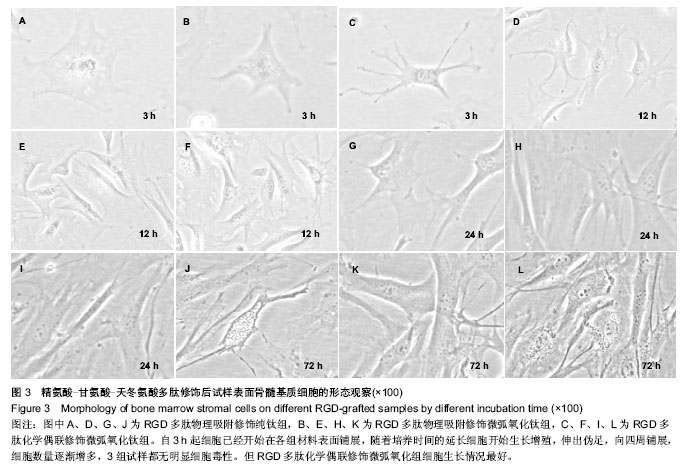| [1] Jin F,Tong H,Shen L,et al.Micro-structural and dielectric properties of porous TiO2 films synthesized on titanium alloys by micro-Arc discharge oxidization.Mat Chem Phys. 2006; 100(1):31-33.
[2] Dunleavy CS,Golosnoy IO,Curran JA,et al.Characterisation of discharge events during plasma electrolytic oxidation.Surf Coat Technol.2009;203(22):3410-3419.
[3] 王彦佳,孙桂荣.钛合金表面微弧氧化技术研究进展及影响因素[J].材料导报A:综述篇,2013,27(8):98-102.112.
[4] Wang HR,Liu F,Zhang YP,et al.Preparation and properties of titanium oxide film on NiTi alloy by micro-arc oxidation.Appl Surf Sci.2011;257(13):5576-5580.
[5] 付涛,慕伟意,杜春雷.钛微弧氧化膜层的生长过程与孔隙结构研究[J].钛工业进展,2008,25(6):16-19.
[6] 王磊,闫凤英,陈建治.微弧氧化时间对纯钛表面膜层微观结构的影响[J].中国组织工程研究,2012,16(51):9546-9550.
[7] 张正,赖毓霄,丁建东.人工合成多肽在生物材料上的修饰进展[J].中国医疗器械信息,2008,14(9):1-6.
[8] Schliephake H,Scharnweber D,Dard M,et al.Effect of RGD peptide coating of tatanium implants on periimplant bone formation in the alveolar crest-an experimental pilot study in dogs.Clin Oral Impl Res.2002;13:312-319.
[9] Dubs M,Weisser J,Linke R,et al.Dextran-based coating system for the immobilization of cell adhesion.Mataiss Werkst. 2009;40(11):853-860.
[10] Beuvelot J,Portet D,Lecollinet G,et al.In vitro kinetic study of growth and mineralization of osteoblast-like cells (Saos-2) on titanium surface coated with a RGD functionalized bisphosphonate.J Biomed Mater Res B Appl Biomater. 2009; 90(2):873-881.
[11] Hu Z,Luo F,Pan Y,et al.Arg-Gly-Asp (RGD) peptide conjugated poly(lactic acid)–poly(ethylene oxide) micelle for targeted drug delivery.2008;85(3):797-807.
[12] 杨国利,何福明,赵士芳.种植体表面RGD组装方法研究进展[J].口腔医学,2008,28(6):328-330.
[13] 吴倩雯,郑元俐,黄慧.钛种植体表面生物化学改性的研究进展[J].口腔颌面修复学杂志,2009,10(2):116-119.
[14] 张黎,郑根建,张治汉.RGD多肽仿生修饰微种植体支抗骨界面结合强度的实验研究[J].吉林医学,2012,33(13):2695-2697.
[15] 王磊,闫凤英,陈建治,等.钛表面微弧氧化处理时间对成纤维细胞铺展行为的影响[J].上海口腔医学,2012,21(5):515-520.
[16] Zhao BH,Tian WM,Feng HL,at al. Effects of RGD peptide grafting to titanium dental implants on the adhesion of human gingival fibroblasts and epithelial cells. J Prosthet Dent. 2005; 5(5):407-410.
[17] 杨大志,郝杰.多肽对生物材料表面修饰的研究现状[J].国外医学:生物医学工程分册,2004,27(2):65-68.
[18] Ni JH,Shi YL,Yan FY,et al.Preparation of hydroxyapatite- containing titania coating on titanium substrate by micro-arc oxidation. Mat Res Butt.2008;43(1):45-53.
[19] 闫凤英,石玉龙,莫伟言.氧化时间对钛表面微弧氧化膜层的影响[J].表面技术,2010,39(4):42-44.
[20] Mauney JR,Blumberg J,Pirun M,et al.Osteogenic differentiation of human bone marrow stromal cells on partially demineralized bone scaffolds in vivo.Tissue Eng. 2004;10(1-2):81-92.
[21] Vehof JW,de Ruijte AE,Spauwan PH,et al.Influence of rhBMP-2 on rat bone marrow stromal cells cultured on titanium fiber meshs.Tissue Eng.2001;7(4):373-383. |



